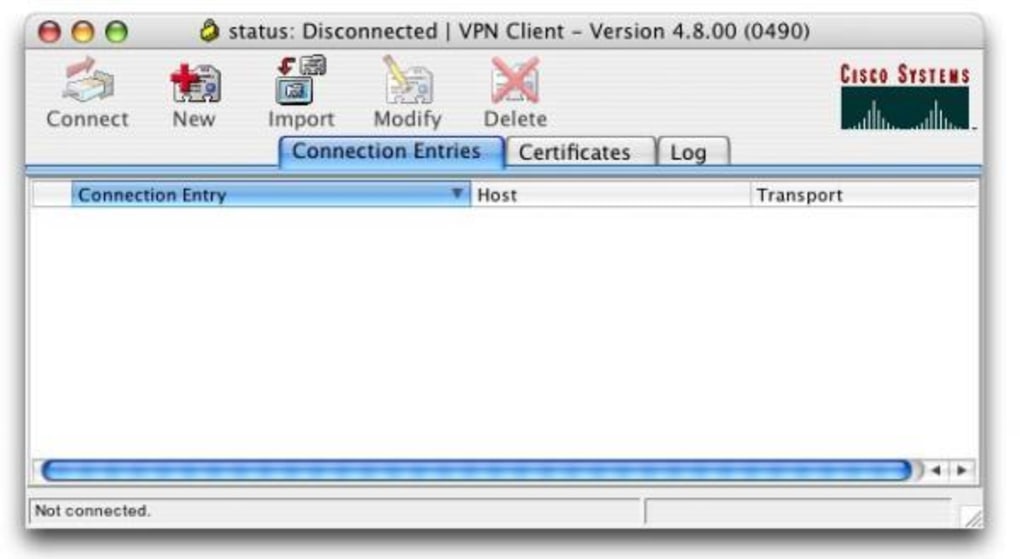
- Configuring cisco vpn client how to#
- Configuring cisco vpn client software#
- Configuring cisco vpn client password#
The lower policy numbers have preference and will be used first if the parameters match. All of the parameters of the policy must match and be agreed upon between the hosts or the secure connection will not be established.įirst we’ll ensure that ISAKMP is turned on. Here we will define the authentication and encryption methods that the hosts will use. Now we will create the ISAKMP policies for clients. Phase 2 creates a tunnel to protect the actual data crossing the connection. The phase 1 negotiation sets up the tunnel to secure future management traffic.
Configuring cisco vpn client how to#
For short called IKE it is the protocol that negotiates to allow two hosts to decide on how to build an IPsec security association (SA). ISAKMP is the Internet Security Association and Key Management Protocol. The clients will be on a virtual subnet distinct from the subnets of the existing interfaces on the Cisco router. We need to set up an address pool to assign VPN clients with IP addresses. R1(config)# aaa authorization network VPN_CLIENT_GROUP local

In this example I’ll set up a named authorization list. We must set up AAA to authorize the clients to use the network. R1(config)# aaa authentication login VPN_CLIENT_LOGIN local Users will be logged in using the local user database. We need to set up extended authentication (Xauth). R1(config)# username aaron secret we need to activate the AAA new model to expose the new command set: R1(config)# aaa new-model This is more secure and will make decryption tougher: R1(config)# conf t
Configuring cisco vpn client password#
We’ll use the secret command modifier instead of password to specify a type 5 password that uses the MD5 hashing algorithm. Let’s begin by adding a user to the local router database. Later once we’ve confirmed that this configuration works we can move on to modifying it to authenticate users against a central user data via the RADIUS protocol to ease our administrative burdens. Initially we’ll start by setting up a local account on the Cisco router itself to use for VPN client authentication. Ip nat inside source list NAT interface FastEthernet0/0 overload I’m using an extended access list to permit NAT traffic, this will be important later because we’ll need disable NAT between the internal interface and the IP address pool that our VPN clients will use.

Basically I’ve assigned IP addresses to the interfaces, configured the default route, and activated NAT. Here is my starting configuration of the router. Here is my network diagram, pretty basic configuration with an external and an internal network:

The router is also configured with NAT overload for the internal network. I have set up my Cisco router with two interfaces, FastEthernet0/0 and FastEthernet0/1. I have tested this configuration and it does work on a physical router, however. I’ve had some difficulties with IPsec and the Dynamips emulator, the VPN connection will start and work for a short time but then the connection will freeze.
Configuring cisco vpn client software#
In this example I will make use of the fantastic GNS3/ Dynamips software for router emulation. Cisco now has a feature called EasyVPN that allows us to specify client configuration on the server and minimize direct configuration of the VPN on the client. However, the security vulnerabilities of the PPTP protocol have been well documented. Traditionally PPTP has been extensively used as a VPN because of it’s simplicity of configuration, especially on the client side. IPsec is a suite of protocols that provides for authentication and encryption of packets. In this article I’ll walk through the configuration of the IOS on a Cisco router to support remote access IPsec VPN connections.


 0 kommentar(er)
0 kommentar(er)
